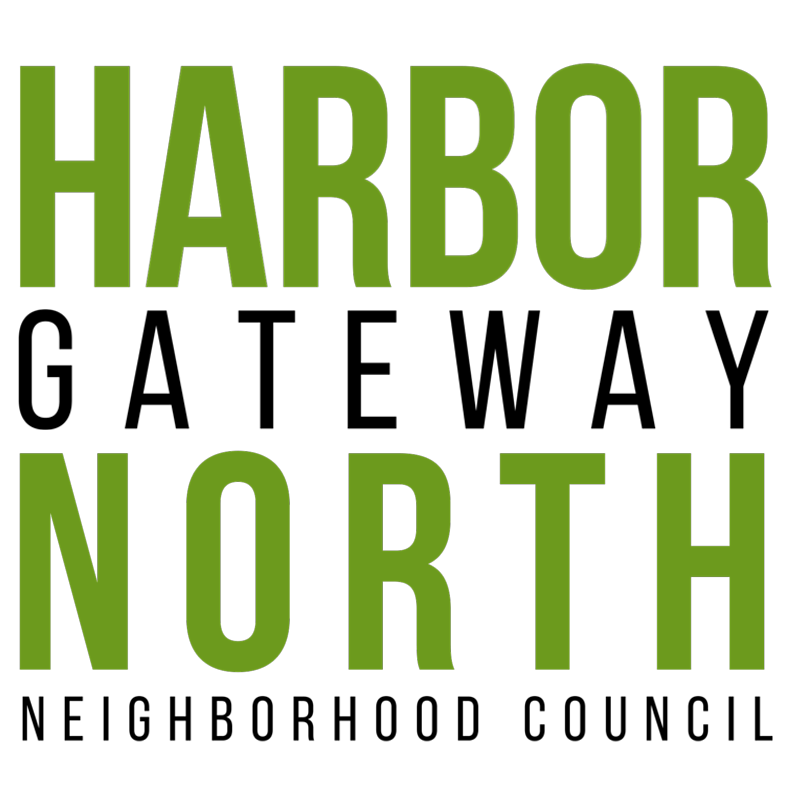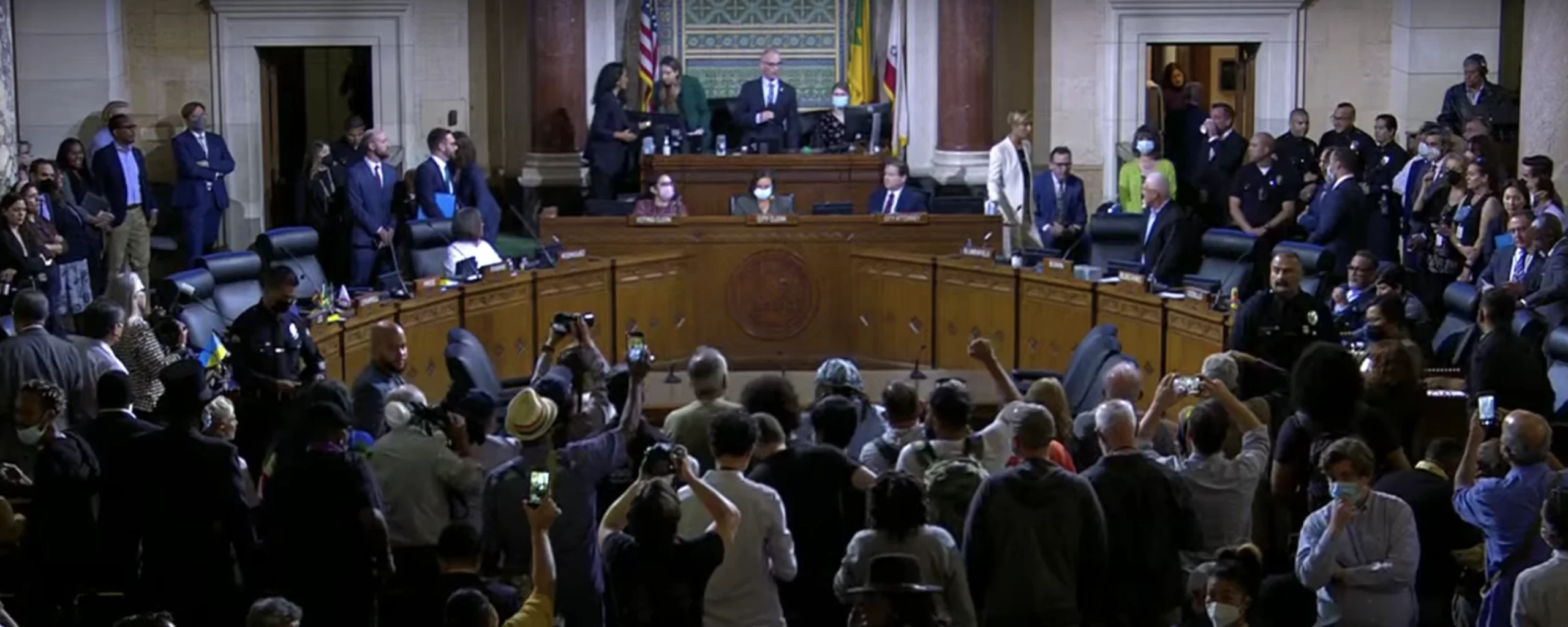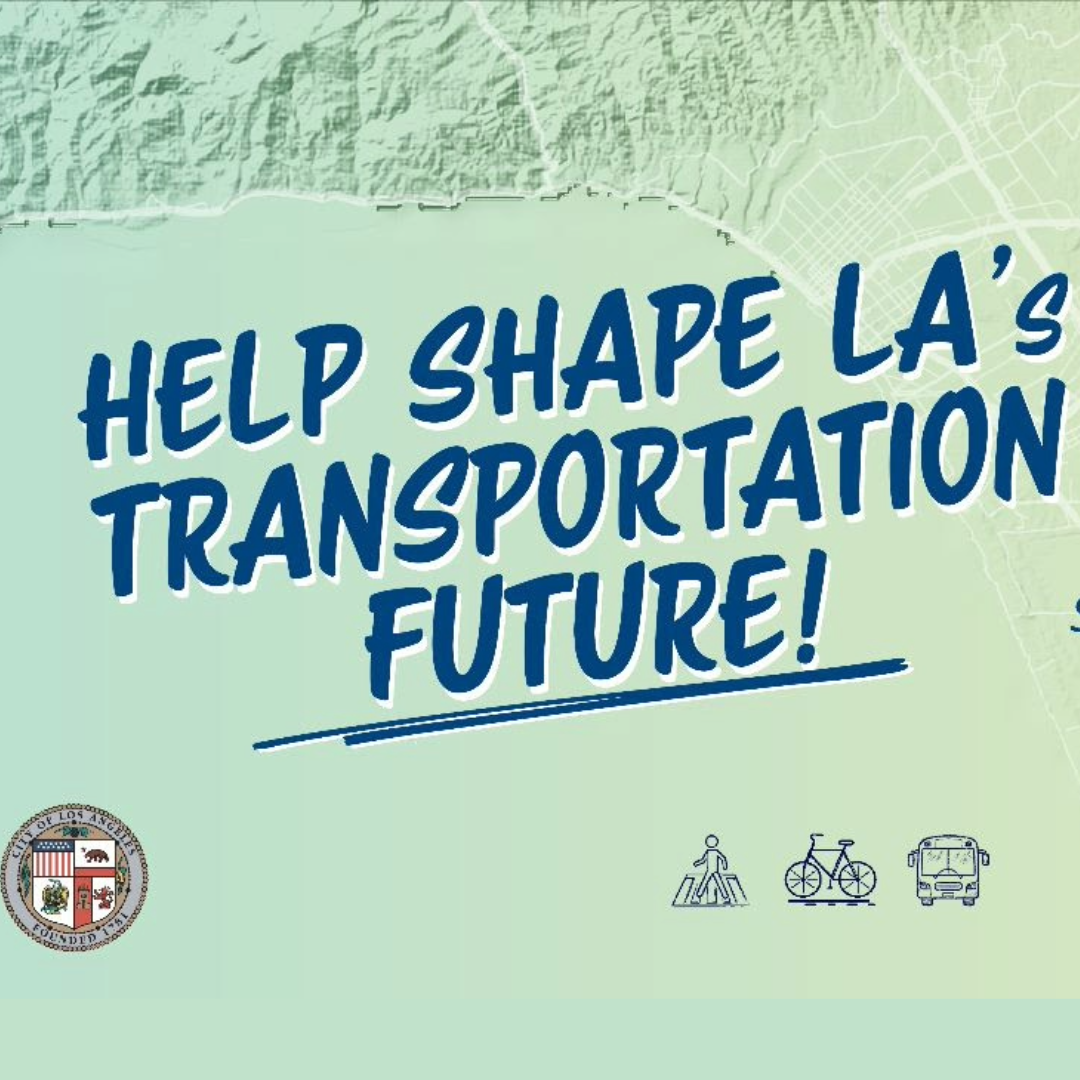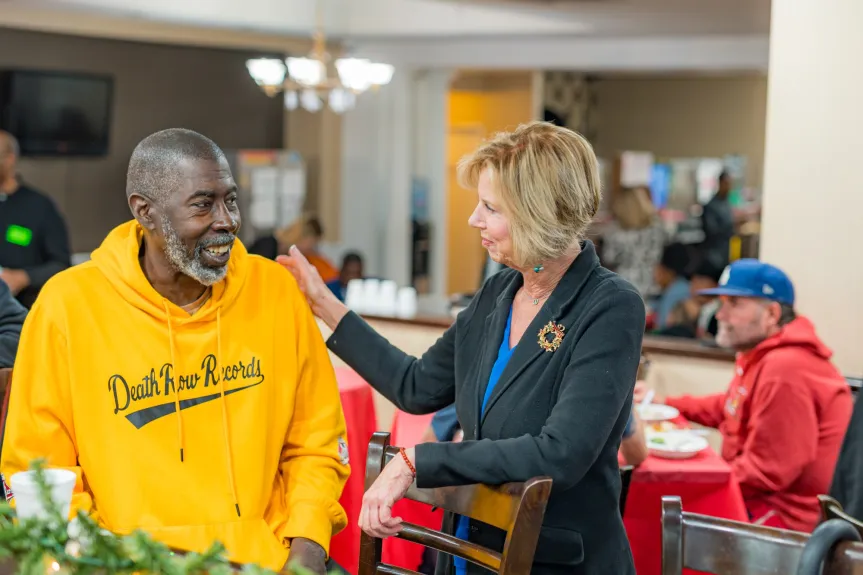
Things are settling down after a period of scandals and elections. New faces are in, and longstanding members are gone. We help you understand who’s who and what’s next.
Los Angeles voters changed out multiple City Council members after the 2022 election, but 2023 is shaping up to be an evolving year of its own.
The first among those changes was a small cohort of progressives who took office on December 12, 2022. Their districts’ support signals that Angelenos may be looking to change course. The council’s previous makeup enacted nearly citywide anti-camping laws and saw systemic racism fester behind closed doors.
The special election for the sixth district seat, which has had a non-voting caretaker since last year, is headed to a June 27 runoff between Imelda Padilla and Marisa Alcaraz. The previous council member, Nury Martinez, was one of three elected officials caught on tape engaging in a racist conversation about redistricting last year.
Another change came from the City Council on April 11, which appointed Heather Hutt to serve out the rest of Mark Ridley-Thomas’ term in the tenth district. The seat opened up after he was automatically ousted under the city charter because of a March 30 conviction on federal corruption charges. Hutt was previously an interim replacement and then briefly a non-voting caretaker.
Here’s your guide to who’s who on the City Council.
Who Represents Each L.A. District?
First, let’s start with which seats were up for election in 2022. The following districts were on the June 7 primary election ballot:
- District 1
- District 3
- District 5
- District 7
- District 9
- District 11
- District 13
- District 15
All but districts 5, 11, 13, and 15 were decided outright — the winning candidate got more than 50% of the vote in the June primary. Voters in 5, 11, 13 and 15 chose between the top two candidates in the Nov. 8 runoff.
The other seats will be up for election in 2024 — District 6 and District 14 (Kevin de León’s).
Each district represents roughly 260,000 residents, far more than other big cities. A motion is in the works to create a ballot measure supporting an expansion of the City Council, which would dramatically shift power dynamics at City Hall. If it’s approved, voters would decide that in 2024. But for now, our councilmembers hold a lot of power.
D1: Eunisses Hernandez (2026)
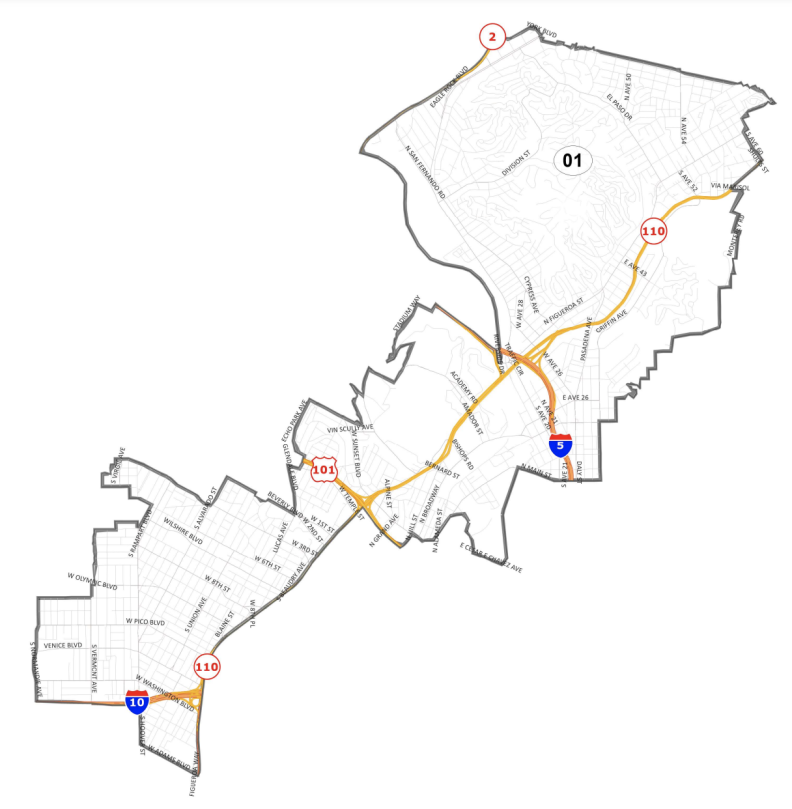
District 1 includes all or part of the following neighborhoods: Glassell Park, Cypress Park, Highland Park, Mount Washington, Solano Canyon, Elysian Park, Echo Park, Angelino Heights, Temple Beaudry, Chinatown, Downtown, Westlake, Rampart Village, Lincoln Heights, Montecito Heights, Pico Union, University Park, Victor Heights, Koreatown.
In office: Eunisses Hernandez
Status: Elected to serve a first term from 2022 to 2026.
District population: 248,124
Turnout in recent elections: 29,808
Here’s the vote in the June 7 primary:
D2: Paul Krekorian (2024)

District 2 includes all or part of the following neighborhoods: North Hollywood, Studio City, Sun Valley, Valley Glen, Valley Village, Van Nuys and Toluca Lake.
In office: Paul Krekorian
Status: Elected to serve a third term from 2020 to 2024.
District population: 250,535
Turnout in recent elections: 46,258
D3: Bob Blumenfield (2026)

District 3 includes all or part of the West San Fernando Valley communities of Canoga Park, Tarzana, Reseda, Winnetka, and Woodland Hills.
In office: Bob Blumenfield
Status: Elected to serve a third term from 2022 to 2026.
District population: 257,098
Turnout in recent elections: 37,128
Here’s the vote in the June 7 primary:
D4: Nithya Raman (2024)

District 4 includes all or part of the following neighborhoods: Encino, Hollywood Hills, Los Feliz and Silver Lake, Reseda, Sherman Oaks, Studio City and Cahuenga Pass.
In office: Nithya Raman
Status: Elected to serve a first term from 2020 to 2024.
District population: 269,290
Turnout in recent elections: 132,999
D5: Katy Young Yaroslavsky (2026)

District 5 includes some or all of the following neighborhoods: Bel Air-Beverly Crest, Greater Wilshire, Mid City West, Palms, Pico, South Robertson, Westside, and Westwood.
In office: Katy Young Yaroslavsky
Status: Elected to serve a first term from 2022 to 2026.
District population: 269,182
Turnout in recent elections: 57,259
Here’s the vote in the Nov. 8 general election:
D6: Vacant (has a non-voting caretaker; runoff election is June 27)
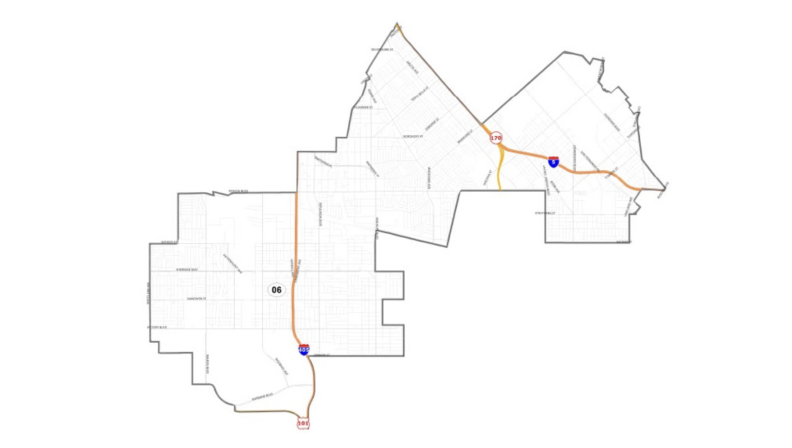
District 6 includes some or all of the following neighborhoods: Arleta, Van Nuys, Sun Valley, North Hollywood, Lake Balboa, North Hills and Panorama City.
In office: Vacant. Former Councilmember Nury Martinez led this district, but she resigned on Oct. 12 under heavy pressure. Since stepping down, the City Council appointed a non-voting caretaker to oversee District 6. The city’s office of the chief legislative analyst, which is led by Sharon Tso, has stayed in place as caretaker while a special election is decided.
Status: The special election was held on April 4, 2023, but no candidate received more than half of the votes. The two top finishers, Imelda Padilla and Marisa Alcaraz, are headed to a June 27 runoff.
District population: 261,114
Turnout in recent elections: 29,404
D7: Monica Rodriguez (2026)
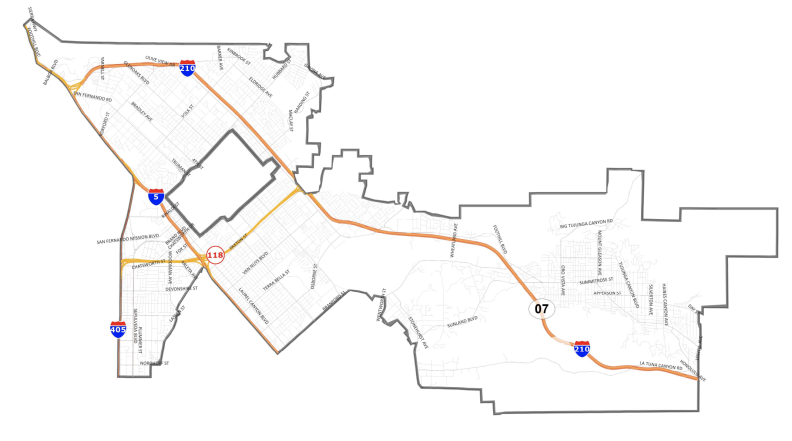
District 7 includes all or part of the northeastern San Fernando Valley communities of North Hills, Sylmar, Mission Hills, Pacoima, Lake View Terrace, Sunland-Tujunga, Shadow Hills, and La Tuna Canyon.
In office: Monica Rodriguez
Status: Elected to serve a second term from 2022 to 2026.
District population: 266,276
Turnout in recent elections: 29,844
Here’s the vote in the June 7 primary:
D8: Marqueece Harris-Dawson (2024)

District 9 includes all or part of the following neighborhoods: South Los Angeles, Baldwin Hills, Watts, Vermont Knolls, King Estates, Canterbury Knolls, Park Mesa Heights, Hyde Park, Chesterfield Square, Vermont Vista, Green Meadows, View Heights and West Park Terrace.
In office: Marqueece Harris-Dawson
Status: Elected to serve a second term from 2020 to 2024.
District population: 257,597
Turnout in recent elections: 32,415
D9: Curren Price Jr. (2026)
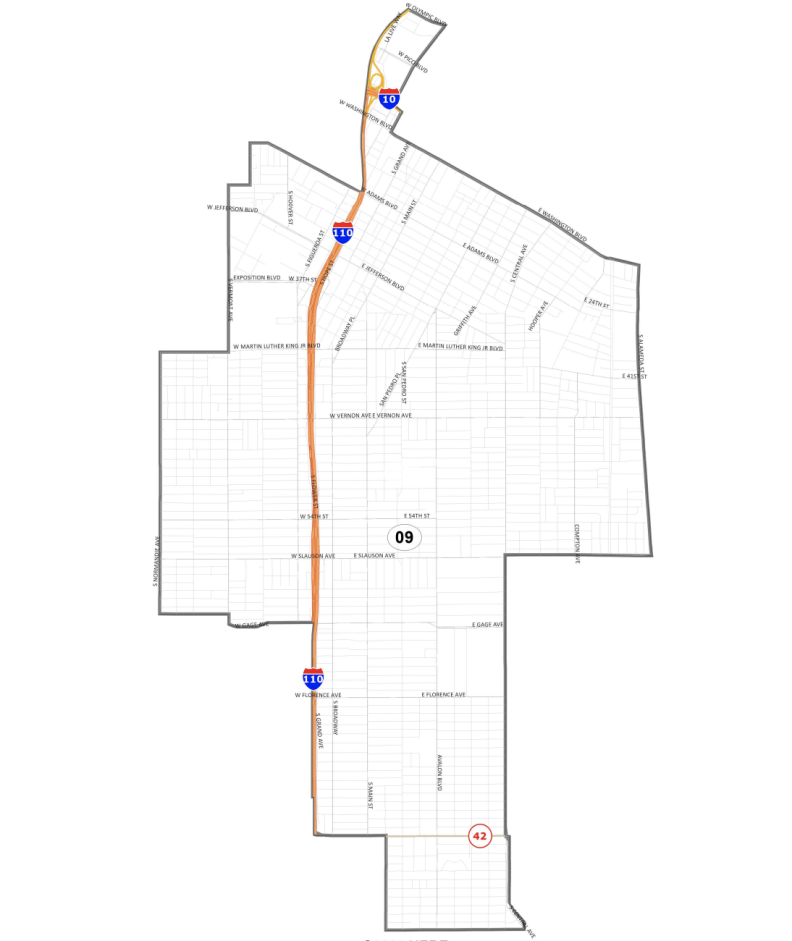
District 9 includes all or part of the South Los Angeles communities of Vermont Square, the Central-Alameda Corridor, and Green Meadows. It stretches north to western Downtown L.A. and includes the U.S.C campus, Exposition Park, the L.A. Live complex and the L.A. Convention Center.
In office: Curren Price Jr.
Status: Elected to serve a third term from 2022 to 2026.
District population: 255,988
Turnout in recent elections: 12,528
Here’s the vote in the June 7 primary:
D10: Heather Hutt (2024)

District 10 includes all or parts of the following neighborhoods: Arlington Heights, Koreatown, Mid-City, Olympic Park, Palms, South Robertson, West Adams, West Pico and Wilshire Center.
In office: Heather Hutt
Status: Appointed to serve the rest of Ridley-Thomas’s term by the City Council on April 11. Hutt was previously an interim replacement in Ridley-Thomas’ seat when he was intitally suspended. She was named a non-voting caretaker for a brief period after his conviction.
District population: 270,703
Turnout in recent elections: 92,604
D11: Traci Park (2026)
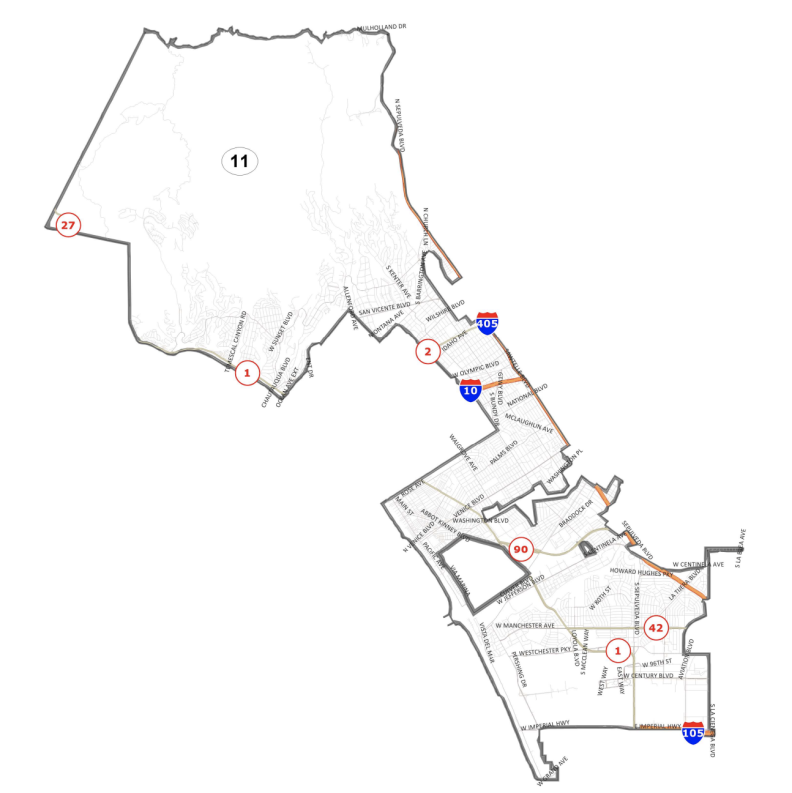
District 11 encompasses all or part of the following Westside neighborhoods:s, Venice, Mar Vista, Westchester, Playa del Rey, Brentwood, Del Rey, Playa Vista, Ladera, Sawtelle,and the Pacific Palisades.
In office: Traci Park
Status: Elected to serve a first term from 2022 to 2026.
District population: 270,691
Turnout in recent elections: 66,171
Here’s the vote in the Nov. 8 general election:
D12: John Lee (2024)

District 12 includes all or parts of the following neighborhoods: Northridge, Chatsworth, Granada Hills, West Hills, Porter Ranch, Sherwood Forest, and portions of North Hills and Reseda.
In office: John Lee
Status: Elected to serve a first term from 2020 to 2024.
District population: 259,564
Turnout in recent elections: 65,213
D13: Hugo Soto-Martínez (2026)
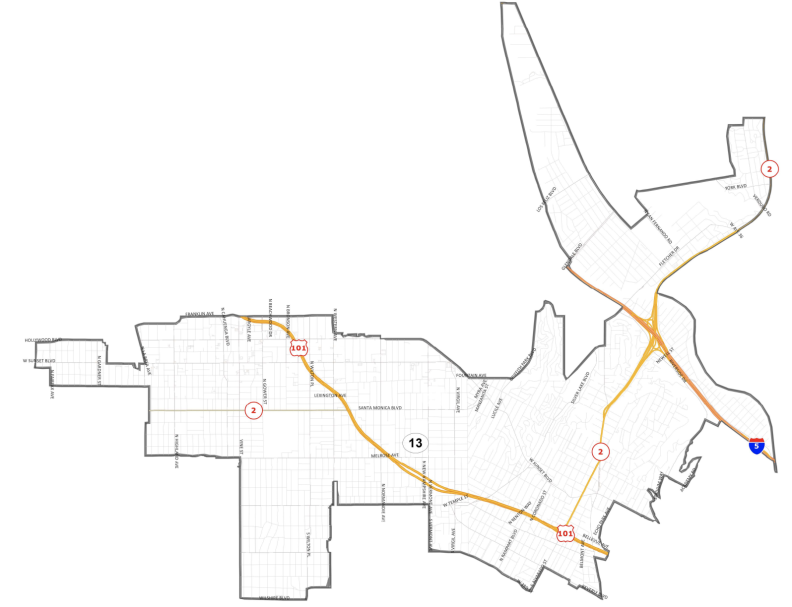
District 13 includes all or some of the following communities: Atwater Village, East Hollywood, Echo Park, Elysian Valley, Glassell Park, Historic Filipinotown, Hollywood, Larchmont Village, Little Armenia, Melrose Hill, Rampart Village, Ridgewood-Wilton, Silver Lake, Spaulding Square, St. Andrews Square, Sunset Square, Thai Town, Verdugo Village, Virgil Village, Western-Wilton, Westlake, Wilshire Center and Windsor Square.
In office: Hugo Soto-Martínez
Status: Elected to serve a first term from 2022 to 2026.
District population: 252,909
Turnout in recent elections: 47,248
Here’s the vote in the Nov. 8 general election:
D14: Kevin de León (2024)

District 14 includes all or part of the following neighborhoods: Boyle Heights, Lincoln Heights, Downtown L.A., El Sereno, Northeast L.A.
In office: Kevin de León
Status: Elected to serve a first term from 2020 to 2024.
District population: 264,741
Turnout in recent elections: 47,677
D15: Tim McOsker (2026)
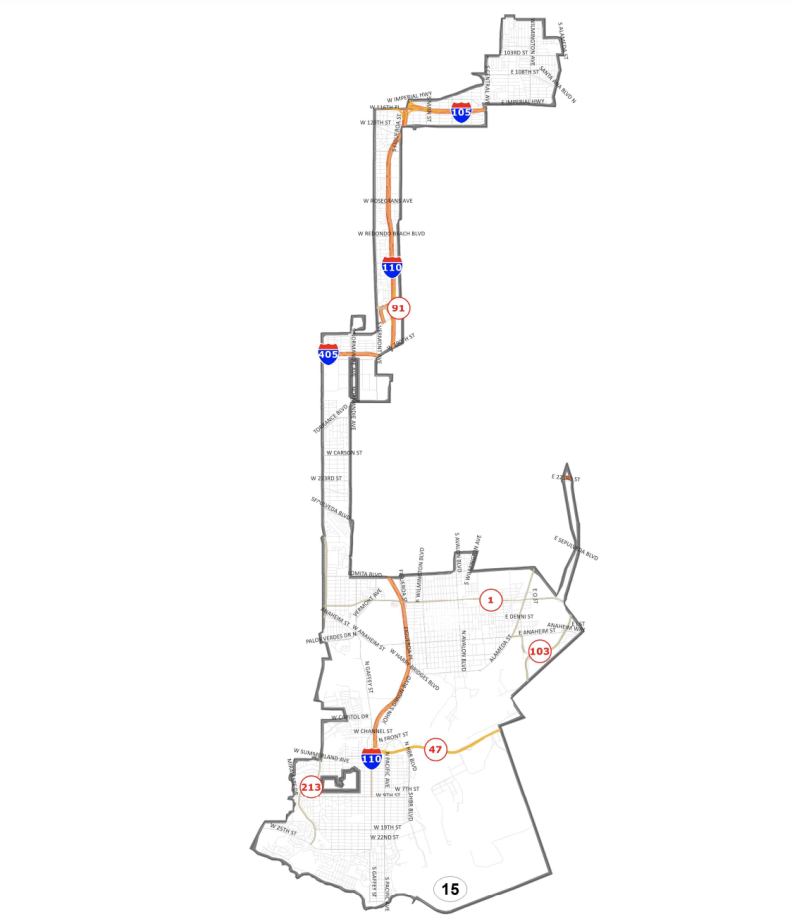
District 15 encompasses all or part of the following neighborhoods: Watts, San Pedro, Harbor Gateway, Harbor City, Wilmington.
In office: Tim McOsker
Status: Elected to serve a first term from 2022 to 2026.
District population: 258,310
Turnout in recent elections: 26,244
Here’s the vote in the Nov. 8 general election:
What Does L.A.’s City Council Do?
Those who follow city government closely say Los Angeles’ City Council is the most powerful City Council in the U.S. At just 15 members, each person elected to serve represents about 260,000 residents within a specific geographic area.
How does that stack up against other big cities? Well, the two other biggest cities in the nation — New York and Chicago — have 51 and 50 city council members, respectively.
Back in 1925, when the city made the switch from at-large representation to districts, each council member represented fewer than 39,000 people. Some observers of L.A. politics, including the Los Angeles Times editorial board, argue it’s time to expand the council. But for right now, we’re talking about 15 council seats, of which eight are currently up for election.
[Note: these districts just went through an extensive review and reshaping based on the results of the 2020 Census. You might not be voting in the same city council district as you did in 2020.]
With so much power in relatively few hands, the relationship the mayor has with the council is particularly important. The mayor needs the council’s support to enact policy. Think of the council as L.A.’s legislature. While the mayor can make proposals and rally public support, it’s the council that writes and passes the laws.
So What Exactly Do Members Of The City Council Do?
- Create local laws, known as ordinances (the mayor then approves or vetoes those ordinances)
- Order elections
- Impose and regulate city taxes
- Authorize public improvements
- Approve city contracts
- Adopt traffic regulations
Councilmembers also vote on the mayor’s proposed annual budget, which allocates funds for city departments. In all, the city employs about 50,000 people — second only to New York City — in more than 40 departments. It’s a lot of money to hold the purse strings for: The city’s proposed FY 2022-23 budget totals just under $12 billion.
Here Are Some Of The Things They Don’t Do
- Oversee the Los Angeles Unified School District (the school board does that)
- Oversee social services such as mental health (this is handled at the county level)
- Make decisions regarding people who live in unincorporated areas of the county (places that aren’t part of the city of Los Angeles or any other city) or people who live in other incorporated cities, such as West Hollywood or Inglewood
In the last few years, the City Council has made headlines for a string of corruption scandals. Three sitting or former councilmembers have been charged with corruption since 2020 (although allegations against Mark Ridley-Thomas date to his tenure on the L.A. County Board of Supervisors).
How Do They Work?
The council is governed by a set of rules covering everything from when and how often it meets to who runs the meetings (the president, who is selected by fellow council members) and how the public can participate (“each speaker shall be limited to one minute of general public comment each regular meeting”).
In addition to regular meetings of the full council, there are numerous committee meetings focused on areas such as transportation, public health, budget and finance, immigrant affairs, public safety, and information and technology. Some cover a range of topics, like the Energy, Climate Change, Environmental Justice, and River Committee, and the Personnel, Audits, and Animal Welfare Committee.
See a full list of council committees and their meeting schedule.
A City Council term is four years; a councilmember can serve a maximum of three terms. The current annual salary for a councilmember is about $224,000.
You Might Recognize Their Work From…
The City Council works as a collective to pass laws that affect the entire city, but your councilmember can have a big impact on your community. That’s because councilmembers have a lot of power to direct funds within their districts.
For example, councilmembers typically have discretion over money earmarked for transportation safety improvements in their district. LAist previously reported on how this played out in two different districts where pedestrians were killed at intersections — in District 5, traffic safety upgrades came less than two months after the pedestrian died, while the other community, which sits in District 10, has been waiting for more than two years for similar improvements.
Councilmembers also have a lot of discretion over how strongly to enforce city ordinances such as the anti-camping ban, which forbids people who are unhoused from camping on public property close to locations such as schools, parks, libraries, and underpasses. That means a person living outside in a tent might have a significantly different experience depending on which district they live in.
What Issues Are The Council Facing?
- Funding for law enforcement will continue to be a contentious issue. Some residents continue to call for cutting the LAPD budget, some call for defunding the police altogether, and others want more police hired to combat the rising crime rate
- The homelessness crisis continues to play a major role in city politics, sparking sharp divisions over how best to get people off the streets and into permanent housing
- The city is falling far short of promises to end traffic deaths by 2025, with the death toll instead rising sharply. The City Council recently called for an audit of Vision Zero, the program created to meet that ambitious goal.
